10 foods you can grow in your house or garden
Fancy helping to save the planet and some cash too? Try growing your own food at home – you might be surprised by just how easy it is.
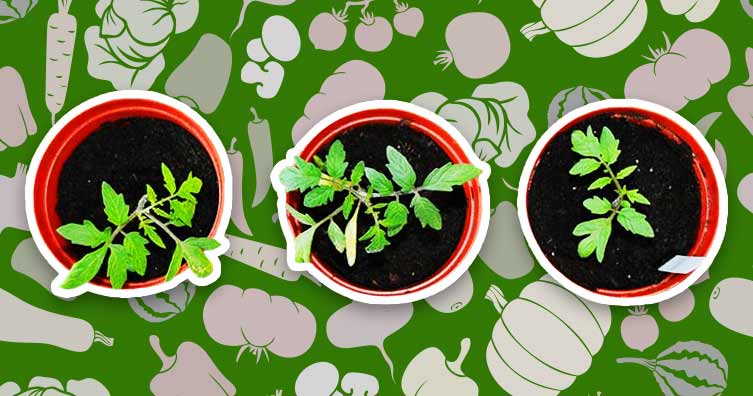
Credit: agrino – Shutterstock
Growing your own produce at home can save you a tonne of cash (and it's pretty fun, too).
The best part is, you don't even necessarily need a garden to grow your own food. You can easily grow a few of your cupboard staples indoors.
We've compiled our top ten greens you can easily grow in your garden (or house!) and added a few tips on how to get started too.
What's in this guide?
How to grow fruit and vegetables at home
First things first: you don't need to have a lush garden to grow all sorts of tasty delights for you and your flatmates.
A little bit of space on a window sill will work just fine for small things like herbs, lettuce and cress, and you can grow smaller vegetables like tomatoes in plant pots in the kitchen.
If you do want to venture outside but have limited room for planting, a hanging basket can give you above-ground growing space.
Or, if you're lucky enough to have a garden with some soil and space for digging, go ahead and start planting (but check with your landlord and neighbours first).
You can also grow things like tomatoes, strawberries or potatoes in grow bags, as long as you have some outdoor space. They don't have to cost much.
For more deep-rooted vegetables such as carrots, you can try using a garden dustbin. It sounds odd, but it can work.
What do you need to grow food at home?
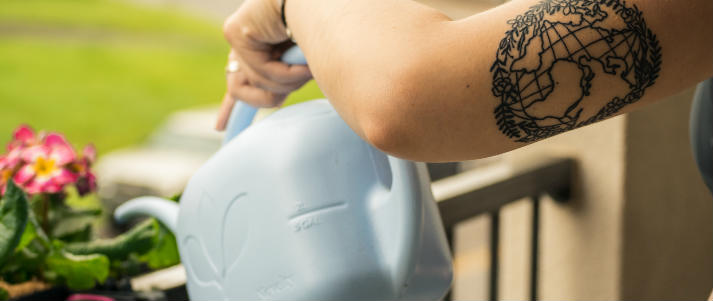
If you're growing indoors, you'll need some appropriate pots, seeds and good-quality soil.
To grow food outside, you might want to invest in a watering can. It can also help to use wooden stakes and garden wire to grow things like tomatoes (as they grow upwards on a vine).
A spot of fertiliser will help to speed up growth and keep your soon-to-be food at its best. You could use Baby Bio branded products for this. However, they're a bit expensive so a regular dry fertiliser (such as Growmore or blood, fish and bone fertiliser) is decent for any veg, and only needs to be used a few times a year.
You'll only need to invest in tools like shovels or trowels if you're going to be planting things in the ground of your garden. However, you can usually get these fairly cheaply on sites like Amazon and B&Q.
10 easy-to-grow foods
If you want to start growing your own food at home, these are the best types of produce:
-
Onions and garlic
As the staple ingredient to so many meals (including our easy chicken traybake recipe), growing garlic and onions at home can save you loads of cash.
Not only are they super easy to grow but, if you store onions correctly, they can last up to eight months. Also, garlic bulbs will keep for months in the freezer (you can break off a clove at a time and keep the rest frozen).
How to grow onions and garlic
To grow onions and garlic at home, look out for those green shoots (the ones that normally mean your bulbs need binning). Plant them as whole onion bulbs or single garlic cloves in well-drained soil. You can either grow them in the ground or in a large grow bag.
Try to make sure they're in soil by spring and leave them to grow (remembering to water them of course).
-
Potatoes
Whether you prefer them roasted, boiled or mashed, potatoes are ideal for loads of tasty dishes, like our cheese and onion rosti recipe. Better yet, you can easily grow them in an old garden dustbin.
The great thing about potatoes is that they're happy to grow just about anywhere when you have a few basics covered. And did you know you can freeze potatoes as long as they're partially or fully cooked?
How to grow potatoes
Fill an old bin, a grow bag or even an old potato bag/sack half full with compost. Then, plant one or two whole potatoes in there. The trick is not to plant too many, as they need a lot of space for the roots to sprout and grow, so if they're too packed in, this won't work.
Once you start to see the green shoots emerge above the soil, cover them with a bit more compost, wait until they emerge again and then repeat.
Continue this process until the bag/bin is full, and 10–20 weeks later, your potatoes should be ready for eating (when the foliage starts to wither, they're ready to be dug out). Remember to keep them well-watered!
Make sure your bin/bag is propped up on top of some bricks to allow water to drain out. Or, if you're growing them inside, cover the bottom of the bin with stones before you add your soil so excess water will drain to the bottom.
-
Herbs
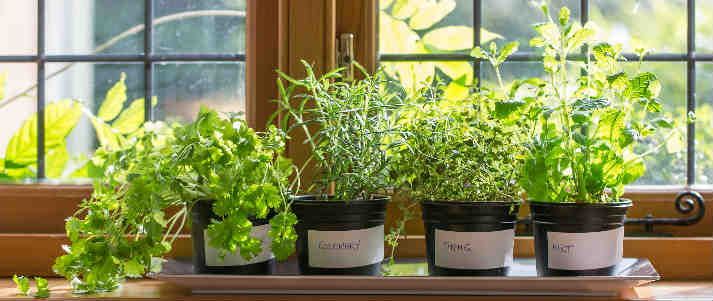
Credit: Christine Bird – Shutterstock
Fresh herbs can make even the most boring meals super tasty. However, the problem is they can cost a fair bob and are difficult to keep fresh for long (although these food storage tricks should help).
Having a nice selection of herbs in a window box, outside in pots or in a hanging basket will be a great addition to your cooking essentials.
How to grow herbs
You can either grab some seeds from a garden centre or buy a potted herb plant from the supermarket.
If buying them from a supermarket, look out for ones in the reduced section that are getting towards the end of their shelf life. Take them home and replant them in your window box and watch them come back to life. This way, they're good to eat past their best!
Basil, chives, parsley and sage will grow happily in a sunny window box or in a plant pot by the window.o
Oregano, thyme, mint and rosemary should all do well both indoors and outside in a garden.
-
Strawberries
Who doesn't love strawberries in their breakfast cereal, on porridge or sliced up in a homemade cocktail?
How to grow strawberries
You can plant strawberries in pots, grow bags or in the garden, as long as they don't get too waterlogged.
The bonus here is that, if you look after them, they'll keep producing fruit year after year.
-
Salad leaves
The great thing about salad leaves is that you can pretty much grow them all year round if you pick different varieties according to the seasons.
How to grow salad leaves
Grow them in the ground if you have space, or in a window box if you have a loose-leaf variety. To spice up your salads, you can also grow spring onions and radishes in plant pots.
Another amazing thing about salad is how quickly the leaves grow. Plant seeds in the summer months and you should have leaves that are big enough to put on your homemade sandwiches in three or four weeks.
If you find slugs are eating them before you, some crushed eggshells can help to ward them off.
-
Chillies and peppers
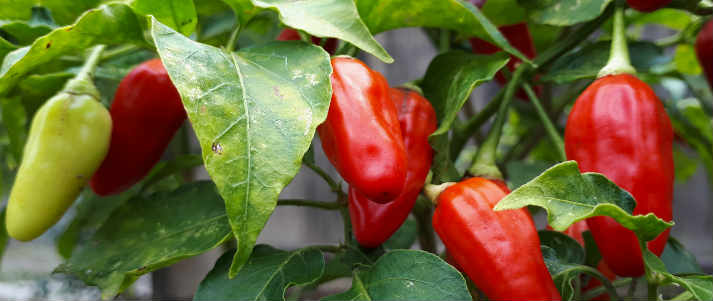
Credit: SparklingOliveStudio – Shutterstock
Hot or not, peppers and chillies are a great way of spicing up any dish – and they're pretty easy to grow, too.
How to grow peppers and chillies
The plants will do just fine in a small pot by your window.
You can grow a variety of different types by seeds. Just stick to one per pot and water them little and often. Easy peasy.
-
Celery
Looking for easy things to grow at home? Celery is one of a few mind-boggling veggies that can reproduce themselves. Just eat what you want and then stick their roots in some water when you're done.
How to grow celery
Put the celery root in a shallow bowl or cup of water by a window sill, making sure it's not totally submerged. Then, you'll just need to spray the top with water occasionally so it doesn't dry out.
A good idea is to stick some cocktail sticks in the sides and rest them on the bowl edges so the top doesn't go underwater.
Amazingly, after about a week, a new little celery head should pop up. At this point, you can transfer it into some soil in a pot or grow bag. You'll have a whole new edible celery within a few weeks.
To save more money on food, remember there are loads of other foods you can regrow from scraps, such as spring onions and ginger.
-
Tomatoes
Tomatoes are a student staple. You can even use them in our super healthy cod and pesto recipe.
How to grow tomatoes
You can either buy tomato seeds and plant them, or opt for a young plant that already has a vine if you want to start producing sooner.
Once they're of a decent size, you can transfer them to your grow bag (or get special varieties for hanging baskets if you'd prefer).
You might have to use a wooden stake and tie the vine to it with garden wire so the plants stay upright. Also, investing in some tomato fertiliser will keep them healthy.
Once they've started to turn red, pick them (it's fine if they're still a bit green/unripened) and pop them on your window sill until they fully ripen. Don't put tomatoes in the fridge until they're ripe, or they might lose some of their taste.
-
Cress
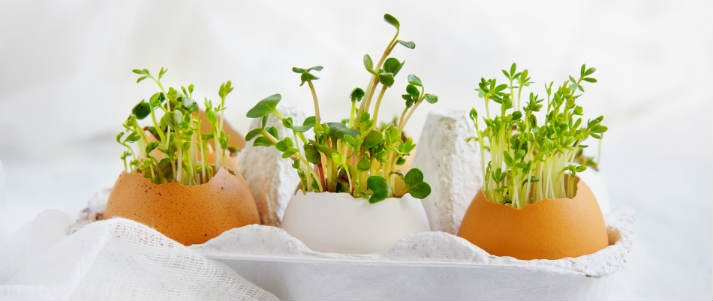
Credit: Yulia-Bogdanova – Shutterstock
For the ultimate in easy-grow food, you really can't get much quicker or easier than cress.
How to grow cress
Grab a shallow plastic pot and whack in some soil and seeds. Pop it in a sunny spot by the window and keep it watered.
Cress is so easy to grow that you could even plant some in an old yoghurt pot, or empty eggshells if you're feeling really creative.
-
Rhubarb
Rhubarb is great. You can boil it up to make pies or crumbles, and it tastes amazing.
However, never eat rhubarb leaves as they are poisonous. Always cut off the leaves and throw them away before preparing to eat rhubarb.
How to grow rhubarb
The easiest way to grow rhubarb is to get some young plants from the garden centre and plant them either in part of your garden or in a large pot.
They do need top-notch potting soil, so this is where you might have to spend a bit of cash. But, rhubarb tends to grow in abundance once it gets going so you should get your money's worth.
Once you've started growing fruit and veg, make sure you know how to store your food so it lasts longer.








